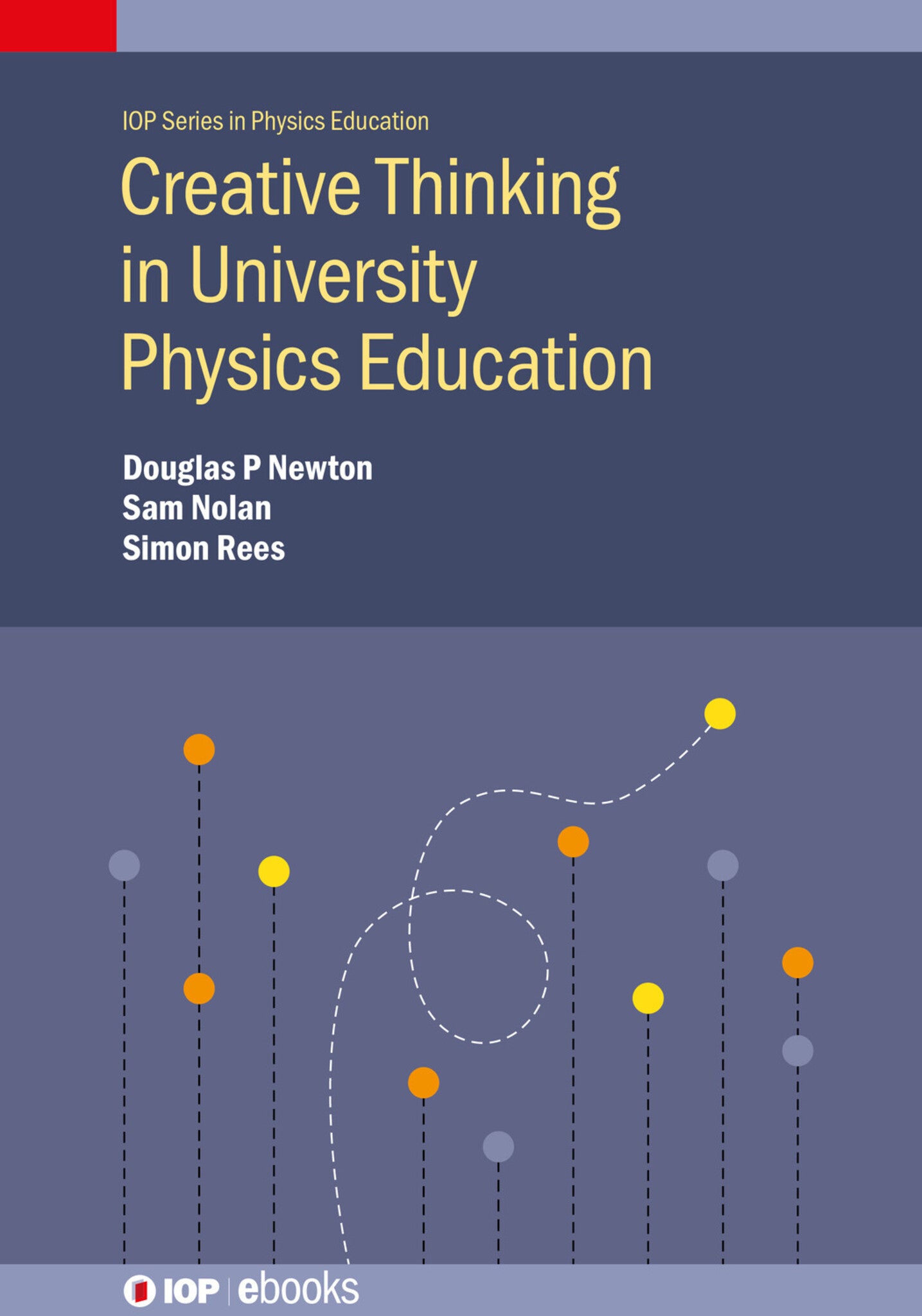We're sorry. An error has occurred
Please cancel or retry.
Creative Thinking in University Physics Education

Some error occured while loading the Quick View. Please close the Quick View and try reloading the page.
Couldn't load pickup availability
- Format:
-
19 December 2022

For physics researchers, creative thinking is used daily to solve challenges at the forefront of what is known about the Universe. In this book, the authors introduce concepts and ideas around creative thinking and provide practical advice and guidance for those who teach physics in universities to help them embed opportunities for creativity in their teaching and in their students’ learning. A range of voices from across the globe share their experiences as creative teachers. Opportunities are provided to reflect on the reader’s own practice and explore where their creativity will take them next. This broad interest book is for all who teach physics in Higher Education and undergraduate and postgraduate levels, and is valuable supplementary reading for professional development courses in creativity.
Key Features
- Describes the nature of creative thinking and learning in physics, and why it is important
- Acts as a guide for physics tutors in universities
- Explains how to be more creative whilst teaching physics, both in terms of promoting creative thinking in students, and being creative in teaching and assessment
- Includes practical examples and highlights how creative teaching can greatly enhance student learning experience
- Underpinned by well-founded educational research, evidence-based practice and personal teaching experience

EDUCATION / Teaching / Subjects / Science & Technology, Teaching skills and techniques, SCIENCE / Physics / General, Higher education, tertiary education, Physics

Creative thinking means thinking outside the box. Most students believe that creative thinking is something that strikes at random. But in physics education, there are many ways to use creative problem solving, even if students don’t think they have innate creativity.
This book is dedicated to introducing concepts and ideas around creative thinking. It provides practical advice and guidance for those who teach physics in universities to help them embed opportunities for creativity in their teaching and their students’ learning. The target audience for this text is all who teach physics at the university level, but anyone concerned with professional development courses in creativity will profit from reading this book.
Christian Brosseau, Optica, April 2023
Preface
Author biographies
1 Creative thinking in physics
2 The creative learner in physics
3 Creative thinking in practice: problems
4 Creative thinking in practice: ideas
5 Creative thinking in practice: experiments
6 Creative thinking in practice: applications
7 Recognising creative thinking in physics
8 The creative tutor
9 Creative approaches to teaching physics in the twenty-first century
10 Creating change



